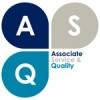The use of external companies is common in all sectors of activity and concerns both one-off interventions and recurring operations such as cleaning, maintenance and catering. These companies can import risks for the users of the buildings because of their work (hot spots, falling objects, etc.) and that, on the other hand, the employees of the external companies can be impacted by the risks specific to the site ( hazardous products, noise…) and this in premises in which they are not necessarily familiar.
This is why European Directive 89/391 (Article 6, § 5) provides that « when, in the same workplace, workers from several companies are present, employers must cooperate in the implementation of the provisions relating to safety, hygiene and health and, given the nature of the activities, coordinate their activities with a view to the protection and prevention of occupational risks, inform each other. »
These obligations have been transposed in the various member countries. When outside companies work on a site, it is essential to put in place appropriate health and safety measures to protect workers and prevent accidents. This page will provide you with information on the management of safety and health during the interventions or involvement of external companies, emphasizing good practices, responsibilities and preventive measures to be taken.
The responsibility of external companies
When an external company is mandated to carry out work on a site, it shares the responsibility for safety and health with the host company. This section will explain the legal obligations of contractors in terms of safety and health, as well as the main elements they must take into account to ensure a safe working environment.
Risk assessment and planning
Before work begins, it is essential to carry out an in-depth assessment of the risks associated with the work of the external company. This section will outline the key steps in risk assessment, including identifying potential hazards, assessing risk levels, and developing a prevention plan to minimize those risks.
Communication and coordination
Clear communication and effective coordination between the external company, the host company and the workers are essential to ensure safety and health during interventions. This section will discuss communication strategies, such as pre-job meetings, incident reporting protocols, and emergency communication channels.
These different measures must be consistent with each other and not create new risks.
A written prevention plan
can be very useful in this context. In France, the articles of the Labor Code R 4512-7 and R4512-12 in France provide for the obligation of a written Prevention Plan: provided that the operation to be carried out by the external companies, including the subcontracting companies which they may call on, represents a total number of foreseeable working hours equal to at least 400 hours over a period of less than or equal to twelve months, whether the work is continuous or discontinuous.
The same applies when it appears, during the execution of the works, that the number of working hours must reach 400 hours. regardless of the foreseeable duration of the operation, when the work to be performed is among the hazardous work appearing on a list fixed by an order of 19 March 1993 (for agricultural establishments, this list is fixed by an order of 10 May 1994): work involving exposure to ionizing radiation, pathogenic biological agents, risk of drowning, risk of burial, etc. The 400-hour threshold is calculated by adding together all the contracts concluded for the performance of the same operation and not external company by external company.
It is recommended to systematically carry out prevention plans in writing, even when the planned operation is not mandatory. Indeed, this makes it possible to formalize and document the measures.
Training and skills
Adequate training of contractor workers is a crucial aspect of safety and health management. This section will highlight the importance of training on site specific hazards, use of personal protective equipment (PPE) and emergency procedures. She will also stress the importance of verifying the skills and certifications of workers before their intervention.
Monitoring and performance evaluation
To ensure the effectiveness of the safety and health measures put in place, it is necessary to carry out regular monitoring and performance evaluation. This section will discuss key performance indicators to monitor, safety and health audits, and feedback mechanisms to continually improve management practices.
Conclusion about the involvement of external companies
The management of safety and health during the interventions of external companies is a crucial aspect to ensure a safe working environment and to prevent accidents.
By following best practices, communicating effectively and properly training workers, host companies and outside companies can work together to ensure the safety and health of all on-site workers.
It may therefore be appropriate to involve them as early as possible, in the context of the drafting of complete specifications, in the choice of preventive measures.
Image: INRS memory aid for risk prevention










Une réponse